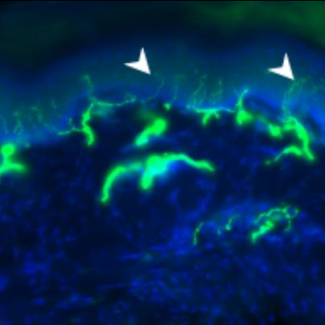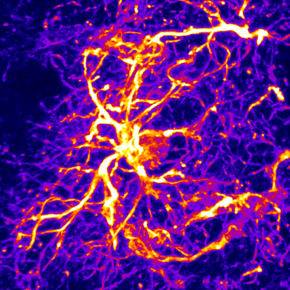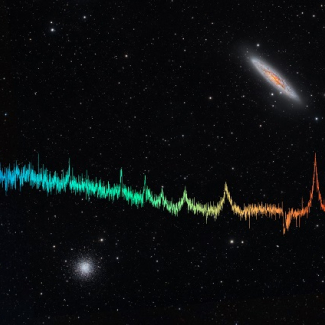
Obesity: the unexpected role of astrocytes
Fatty diets and obesity affect the structure and function of astrocytes1 , the star-shaped brain cells located in the striatum, a brain region involved in the perception of pleasure generated by food consumption. What is even more surprising is that by manipulating these astrocytes in vivo in mice can influence metabolism and correct certain cognitive changes associated with obesity (ability to relearn a task, for example). These results, described by scientists from the CNRS2 and the Université Paris Cité, are to be published on 7 July in the journal Nature Communication.
These discoveries reinforce the idea that astrocytes (long neglected in favour of neurons) play a key role in brain function. They also demonstrate, for the first time, the ability of astrocytes to restore cognitive function in the context of obesity, opening up new avenues of research to identify their exact role in energy metabolism.
These conclusions were reached using a combination of ex vivo and in vivo approaches in rodents, including chemogenetic techniques3 , brain imaging, locomotion tests, cognitive behaviour and measuring the body's energy metabolism.

- 1Unlike neurons, astrocytes (nervous system cells) do not generate electrical activity, which has made them less easy to study in the past. However, thanks to improvements in observation techniques, we now know that their close cooperation with neurons is essential to the proper functioning of the nervous system.
- 2Reporting to l’Unité de biologie fonctionnelle et adaptative (CNRS/Université Paris Cité). Scientists from l’Institut de biologie Paris-Seine (CNRS/Inserm/Sorbonne Université) were also involved.
- 3Calcium is an essential chemical element for astrocyte function, enabling synaptic activity to be modulated. The chemogenetic technique employed was based on the use of a virus, to express, in a targeted manner in the astrocytes, a protein that could modulate calcium flow in the cell, rather like a switch. The scientists were thus able to study the effect of these calcium flows on the activity of the astrocytes and surrounding neurons.
Striatal astrocytes modulate behavioral flexibility and whole-body metabolism in mice. Enrica Montalban, Anthony Ansoult, Daniela Herrera Moro Chao, Cuong Pham, Clara Franco, Andrea Contini, Julien Castel, Rim Hassouna, Marene Hardonk, Anna Petitbon, Ewout Foppen, Giuseppe Gangarossa, Pierre Trifilieff, Dongdong Li, Serge Luquet and Claire Martin. Nature Communication, 7 July 2025.


